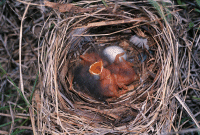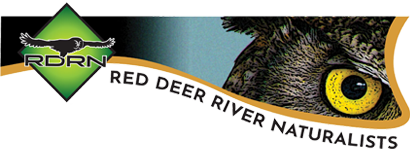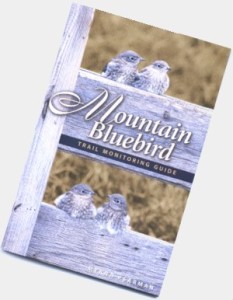Mountain Bluebird Trail Monitoring Guide
The aim of the booklet is to encourage more people to become interested in Mountain Bluebird conservation and establishing bluebird trails and also encourage current trail monitors to communicate with each other so that Mountain Bluebird trail data can be compiled from across this bird’s range. There is so much about the life cycle and natural history of the Mountain Bluebird that is still unknown: Where do non-resident Mountain Bluebirds go for the period of time between fledging and when the birds regroup prior to migration? What are the dynamics of courtship and nest site selection? Do clutch sizes vary geographically, with latitude or altitude, over the course of the breeding season, according to box floor size and/or according to the age of the female. Bluebird trail monitors can contribute significantly, through careful observation and data collection, to our understanding of the ways of the Mountain Bluebird.
- The Mountain Bluebird
- Range
- Identification
- Mountain Bluebird Conservation
- Food and water
- Nesting
- Fledging and post-fledging
- Mountain Bluebird Nest box Designs
- Nest box designs
- Nest box plans
- Mountain Bluebird Trails
- Breeding habitats
- Mountain Bluebird trail basics
- Placement and mounting of nest boxes
- Tools of the trail trade
- Collecting data
- For you
- Monitoring nest boxes
- Mountain Bluebird life cycle
- Aging nestlings
- Determining fledging success
- Final notes
- Dealing With Challenges on the Trail
- Potential Problems
- Competitors and predators
- Human health-related concerns
- Protecting Other Native Cavity Nesters
- Other bird tenants
- List of Tables
- Life cycle chart
- Troubleshooting chart
- Other cavity nesters in Mountain Bluebird range
 Don’t miss the series of spectacular photos documenting the daily development of Mountain Bluebirds from egg to adult. Clear line drawings show you step-by-step instructions for building bluebird nest boxes. Legal issues are addressed. This is the best book for the beginner or professional Mountain Bluebird trail operator on the market. Author Myrna Pearman has produced another classic. Click link below to access guide.
Don’t miss the series of spectacular photos documenting the daily development of Mountain Bluebirds from egg to adult. Clear line drawings show you step-by-step instructions for building bluebird nest boxes. Legal issues are addressed. This is the best book for the beginner or professional Mountain Bluebird trail operator on the market. Author Myrna Pearman has produced another classic. Click link below to access guide.


